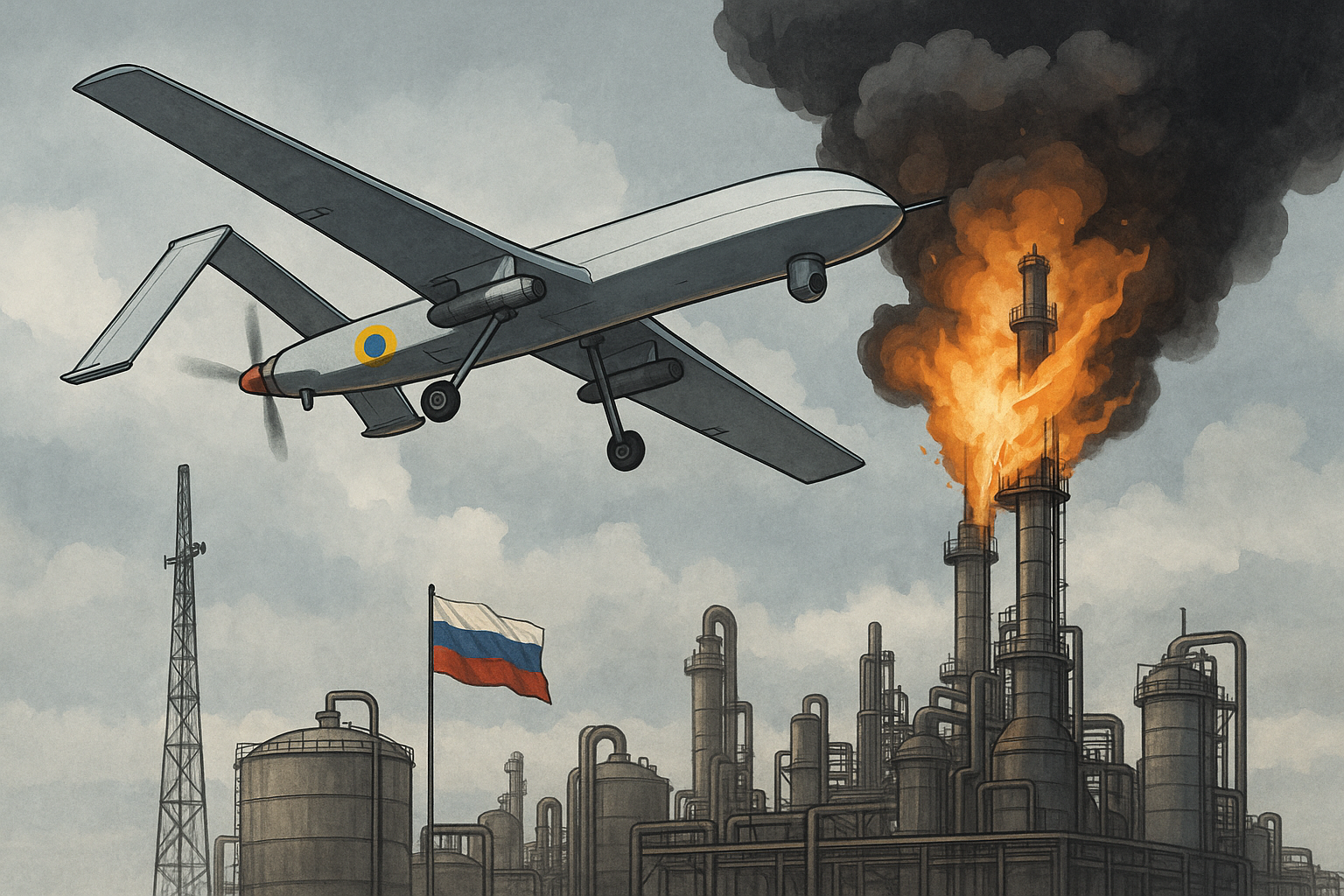Ukraine Deploys Long-Range Drones to Strike Russia’s Energy Sector in Strategic Blitz
By Tredu.com • 10/16/2025
Tredu

Introduction
Ukraine has dramatically intensified its aerial offensive against Russia’s energy infrastructure using long-range drones, striking refineries, pipelines, and export terminals up to 2,000 km from its border. The campaign seeks to squeeze Russia’s war economy by targeting its fuel supply chain.
Scope & Scale of the Drone Campaign
Since August, Ukraine has launched at least 58 drone attacks deep into Russian territory, a dramatic jump from just one in June and two in July. The attacks have focused on:
- Major refineries
- Pumping stations and pipeline chokepoints
- Storage depots
- Export terminals in ports
By mid-August, around 17% of Russia’s refining capacity was knocked offline; by late August, damage had grown to about 21%.
Domestic gasoline prices in Russia spiked nearly 10%, and diesel also rose, while queues formed at filling stations in some regions.
Strategic Logic & Objectives
Ukraine’s leadership views these strikes as a kind of “fastest working sanctions”, depriving Russia of fuel needed for both military and civilian uses.
The operation pressures Russia to reroute crude for export rather than refining internally, and imposes high capital and logistic costs on restoring damaged facilities.
Key goals include: stressing Russia’s war budget, disrupting energy flows to the front lines, and compelling Moscow to respond or divert resources to defense of infrastructure.
Russian Response & Limitations
Russia has begun deploying anti-drone nets, hardened defenses, and countermeasures around key refineries like Gazprom Neftekhim Salavat. Still, Kiev’s campaign pushes challenges:
- Sustaining tempo and scale while avoiding interception
- Ensuring drone navigation under electronic warfare
- Balancing risk of escalation or retaliation
Experts caution that full collapse is unlikely; the resilience and redundancy of Russian infrastructure mitigate total damage.
Market & Global Energy Impacts
The strikes introduce fresh uncertainty into global energy markets. Should Russian refining capacity remain constrained, refined product exports (gasoline, diesel) may tighten, pushing premium spreads. Crude exporters may gain relative leverage, as Russia may increase crude exports to compensate.
Oil and refined product markets will watch for Russia’s output rerouting, shipping delays, and possible price pass-through to European buyers already facing supply constraints.
Outlook & What to Watch
- Continued frequency and range of drone strikes
- Russian repair timelines and infrastructure resilience
- Shifts in Russia’s export mix (crude vs refined products)
- Changes in global refined product supply and spreads
- Political and military escalation responses from Moscow
Conclusion
Ukraine’s bold drone campaign against Russia’s energy infrastructure marks a new front in its hybrid war strategy, aimed at crippling fuel supply lines far inside Russia. If sustained, the campaign could tilt energy flows, force costly rebuilds, and strain Moscow’s fiscal balance. The core theme: in modern warfare, infrastructure becomes both weapon and target.

How to Trade Like a Pro
Unlock the secrets of professional trading with our comprehensive guide. Discover proven strategies, risk management techniques, and market insights that will help you navigate the financial markets confidently and successfully.


